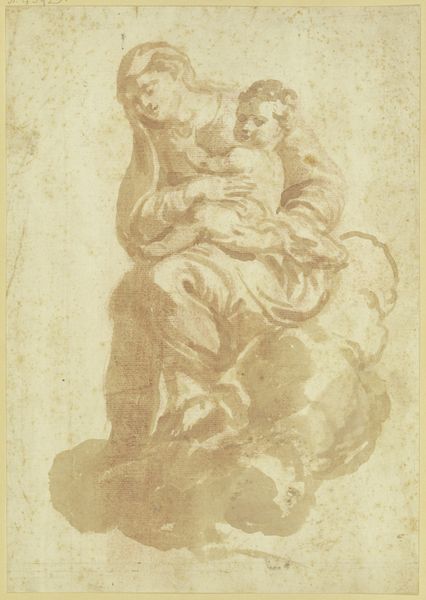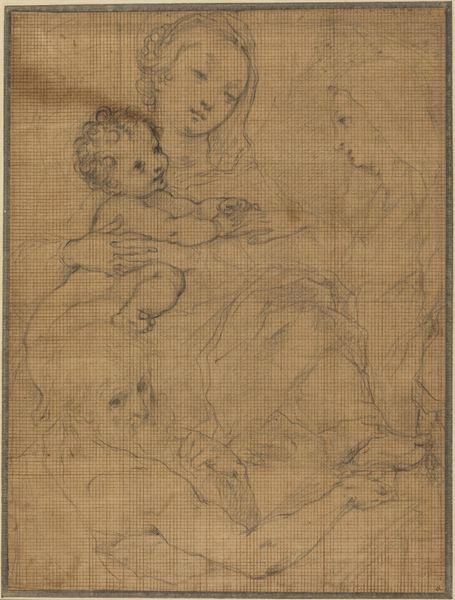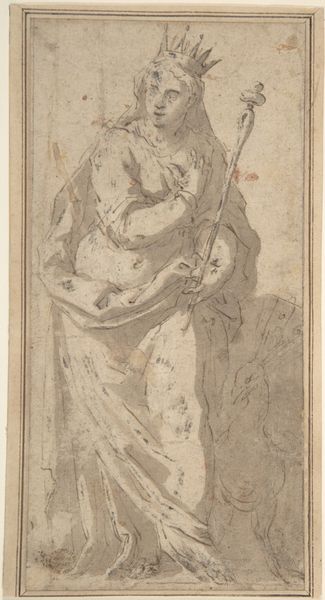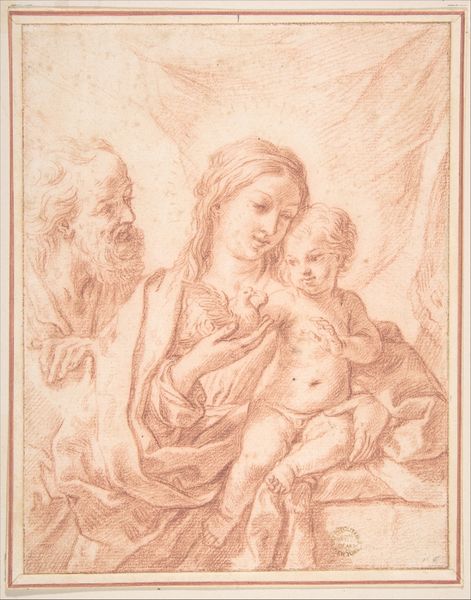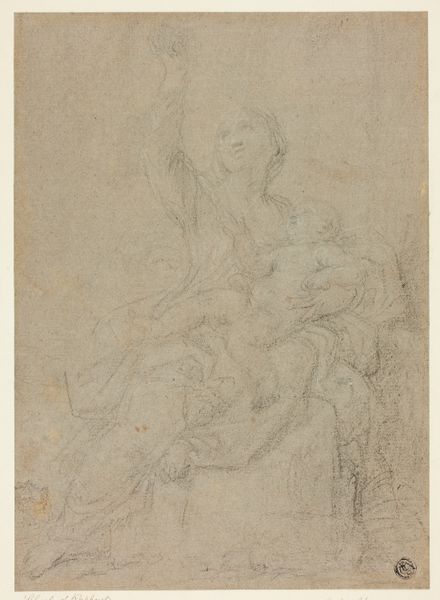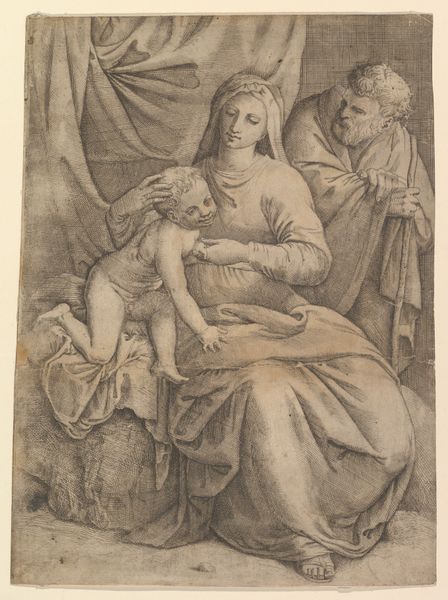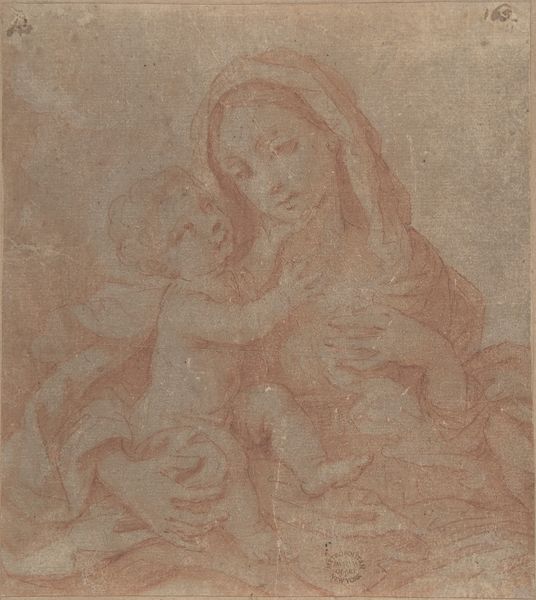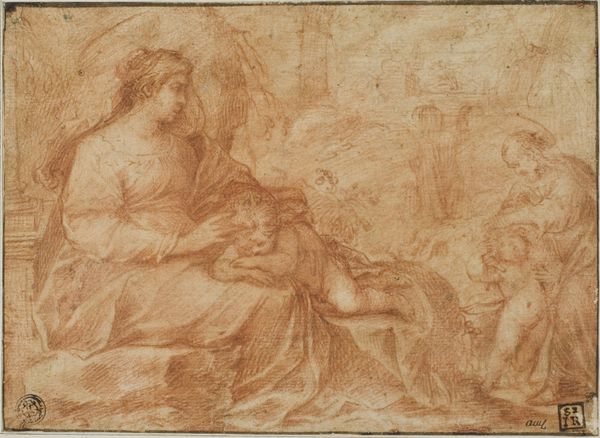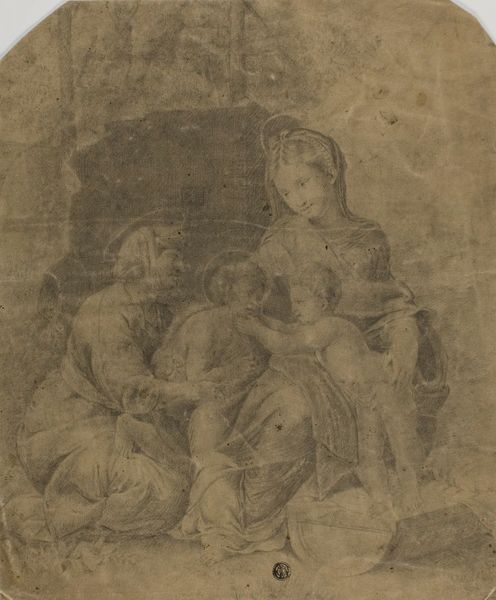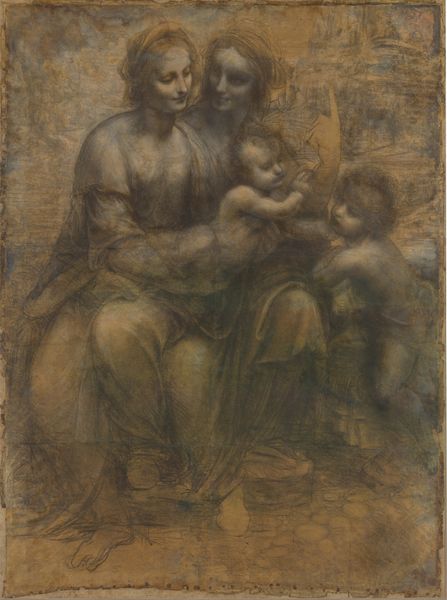
drawing, charcoal
#
drawing
#
charcoal drawing
#
figuration
#
11_renaissance
#
charcoal
#
history-painting
#
italian-renaissance
Dimensions: Overall (approximate): 93.8 x 67 cm (36 15/16 x 26 3/8 in.) framed: 138.8 x 112.4 x 12.1 cm (54 5/8 x 44 1/4 x 4 3/4 in.)
Copyright: National Gallery of Art: CC0 1.0
Curator: What strikes me immediately about this charcoal drawing is its quietude. The figures seem bathed in a soft light, almost dreamlike. There's a serene quality despite the implied interaction between them. Editor: That's a perfect observation. This is "The Madonna and Child with Saint John the Baptist" by Raphael, dating to around 1507. It provides us with insight into Renaissance devotional practices. What we're looking at is more than just a pleasing arrangement; it's a carefully constructed symbol of religious and political authority, deeply rooted in the social structures of the time. Curator: Absolutely. Look at the Madonna's downward gaze—a classic motif representing humility, while also subtly directing our attention towards the children. The almost classical smoothness of her face and form recalls established ideas about the mother figure, as an iconic representation. I would argue her downward-cast gaze indicates acceptance and nurturing. Editor: I'm particularly interested in how this image was consumed during the Italian Renaissance. Raphael's works were coveted by powerful families, like the Medicis, becoming symbols of their piety and refinement, so they held societal as well as spiritual power. The charcoal medium also highlights questions about production and how its accessibility widened with developing printmaking techniques. It's important to contextualize what that accessibility means. The materiality of drawing as preparation should make us ask who has traditionally accessed what? Curator: An excellent point about materiality. Charcoal gives it that sketch-like quality. There is an element of immediacy, like it offers a fleeting glimpse. A window into an intimate moment made universally approachable by virtue of how rapidly its artist must have set the scene down. Editor: What's really remarkable is how Raphael navigated the competing demands of patronage and artistic expression. Works such as this Madonna showcase this play between social mandate and spiritual meaning in such an influential period of art history. His impact shaped public perception towards religiosity throughout that era, and our own. Curator: A sentiment, I agree with. After consideration, it seems a very knowing Madonna. A look not of suffering, but serene acceptance. Editor: Precisely. This is an incredibly revealing piece, offering glimpses into art's socio-cultural history. It prompts reflections on our own perspectives, while contemplating the powerful role art serves as a shaper of societal norms.
Comments
No comments
Be the first to comment and join the conversation on the ultimate creative platform.
